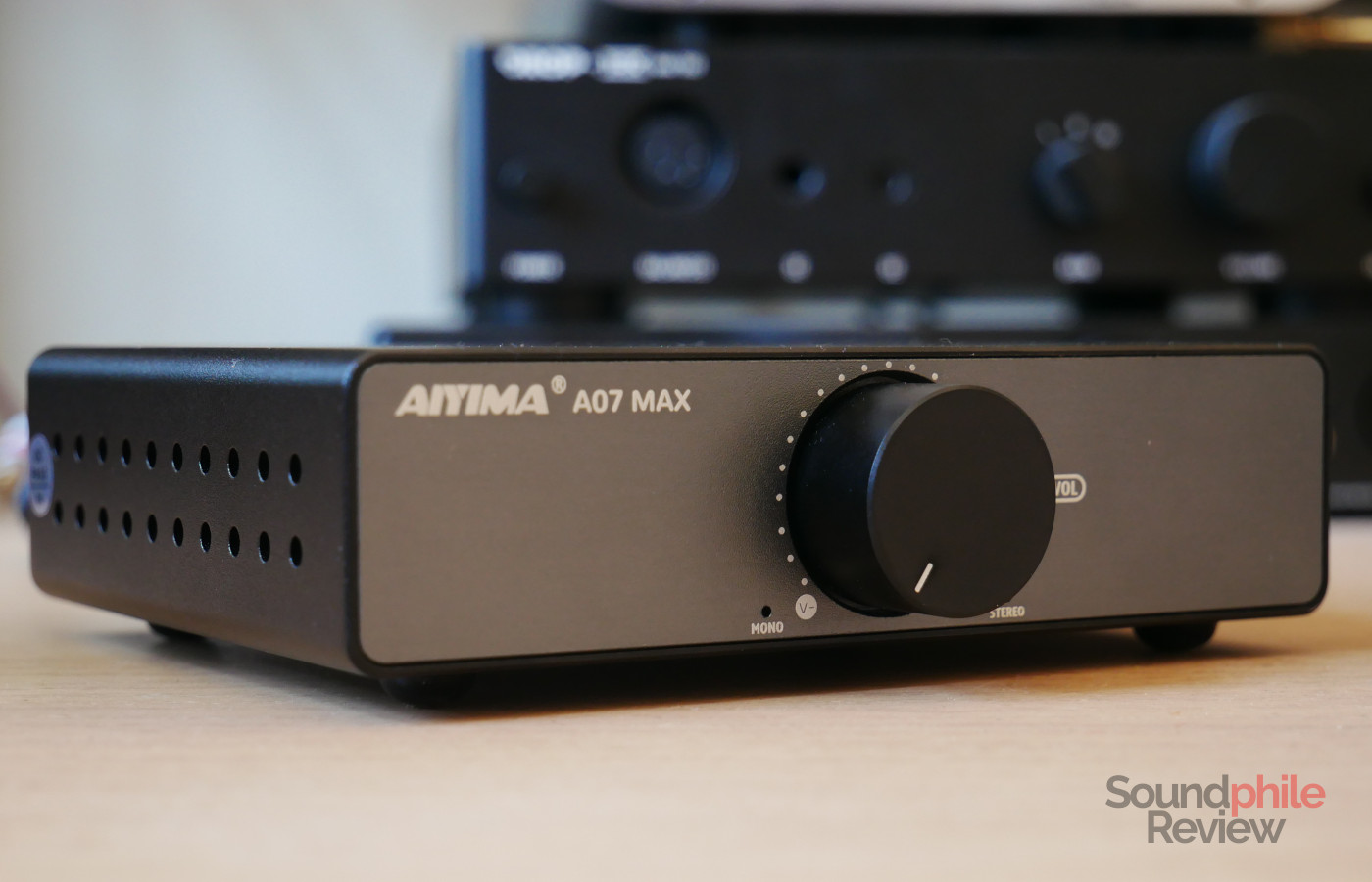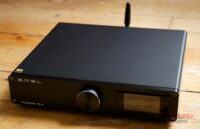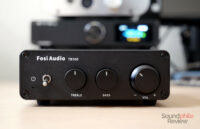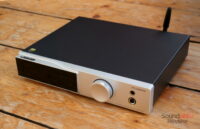It is almost incredible to think how much progress we have had in the affordable space in the past several years. The AIYIMA A07 MAX power amplifier is one example of such progress: it offers (potentially) enormous amounts of power with ruler-flat frequency response at a very affordable price point.
Disclaimer: I received this unit directly from AIYIMA for the purpose of this review. The A07 MAX retails for $65.99 with a 32 V PSU. You can buy it directly from the manufacturer.
TL;DR: recap
| Pros |
Cons |
| + Super small size
+ Neutral sound signature + Great build quality + Incredibly affordable |
– Large dead zone on the volume knob |
Rating: 9.5/10
Packaging & Accessories
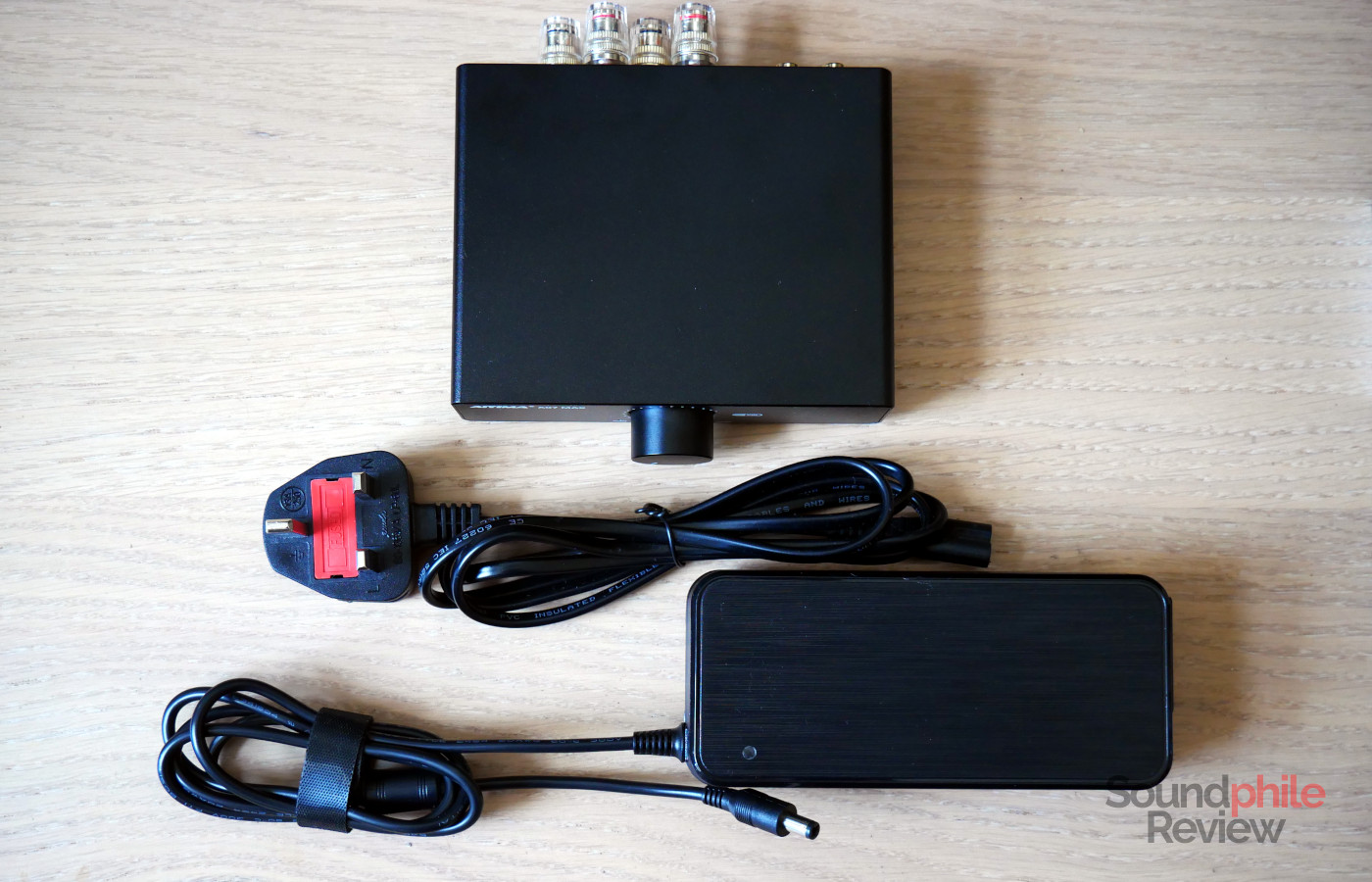
The packaging is very simple and the cardboard box only contains the amplifier, the power supply unit and a manual. It should be noted, however, that there are two types of PSU: 32 V and 48 V. The one I received is the latter, which is also slightly more expensive.
Design & Build
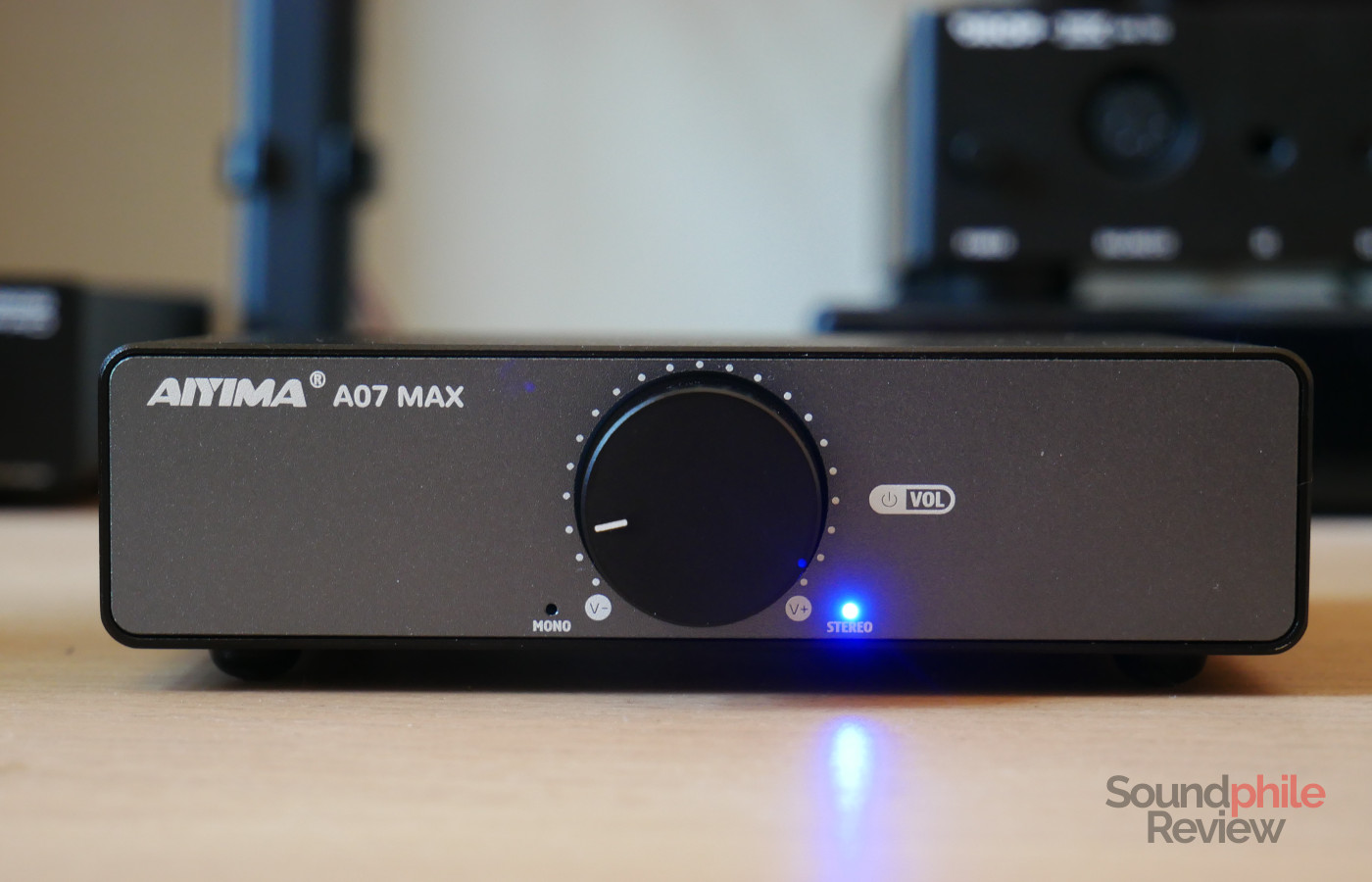
If there is one impressive thing about the AIYIMA A07 MAX, and it’s the size. At 12.6 x 10 x 3.6 cm, the amplifier is so small it is barely larger than my phone! The chassis is made entirely of aluminium and is made of three pieces: the main body, the front and the back. The main body is black, whereas the front is grey with white text on it. Both the bottom and the sides feature holes to facilitate heat dissipation.
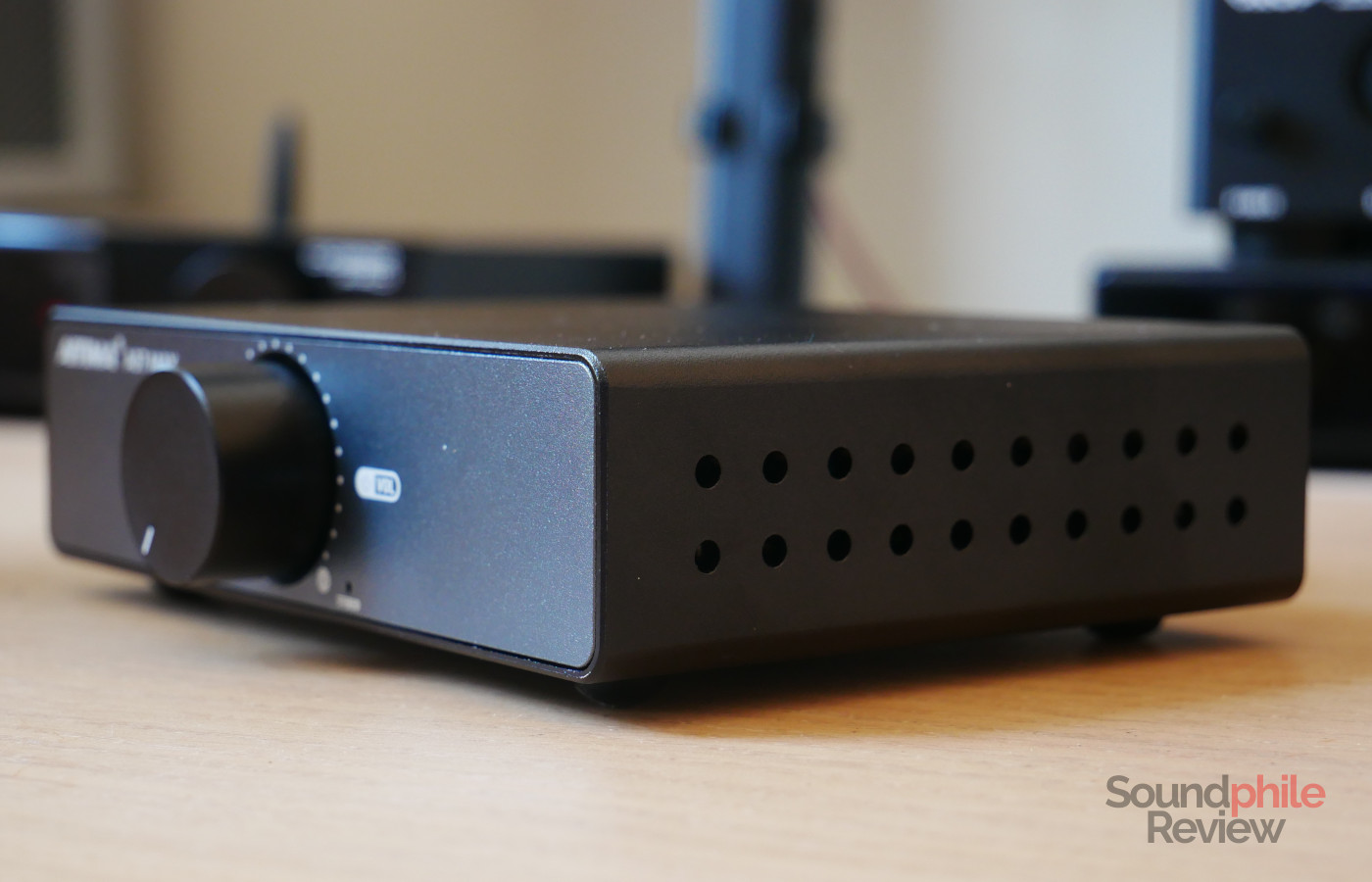
The front hosts the volume knob in the centre, with a status LED on each side that indicates the mode the amplifier is operating in (mono or stereo). The back hosts the two RCA inputs, a 3.5 mm jack output (which you can use e.g. for a subwoofer or another amplifier), the speaker terminals and the power input connector. On the bottom we find a switch to select mono or stereo mode.
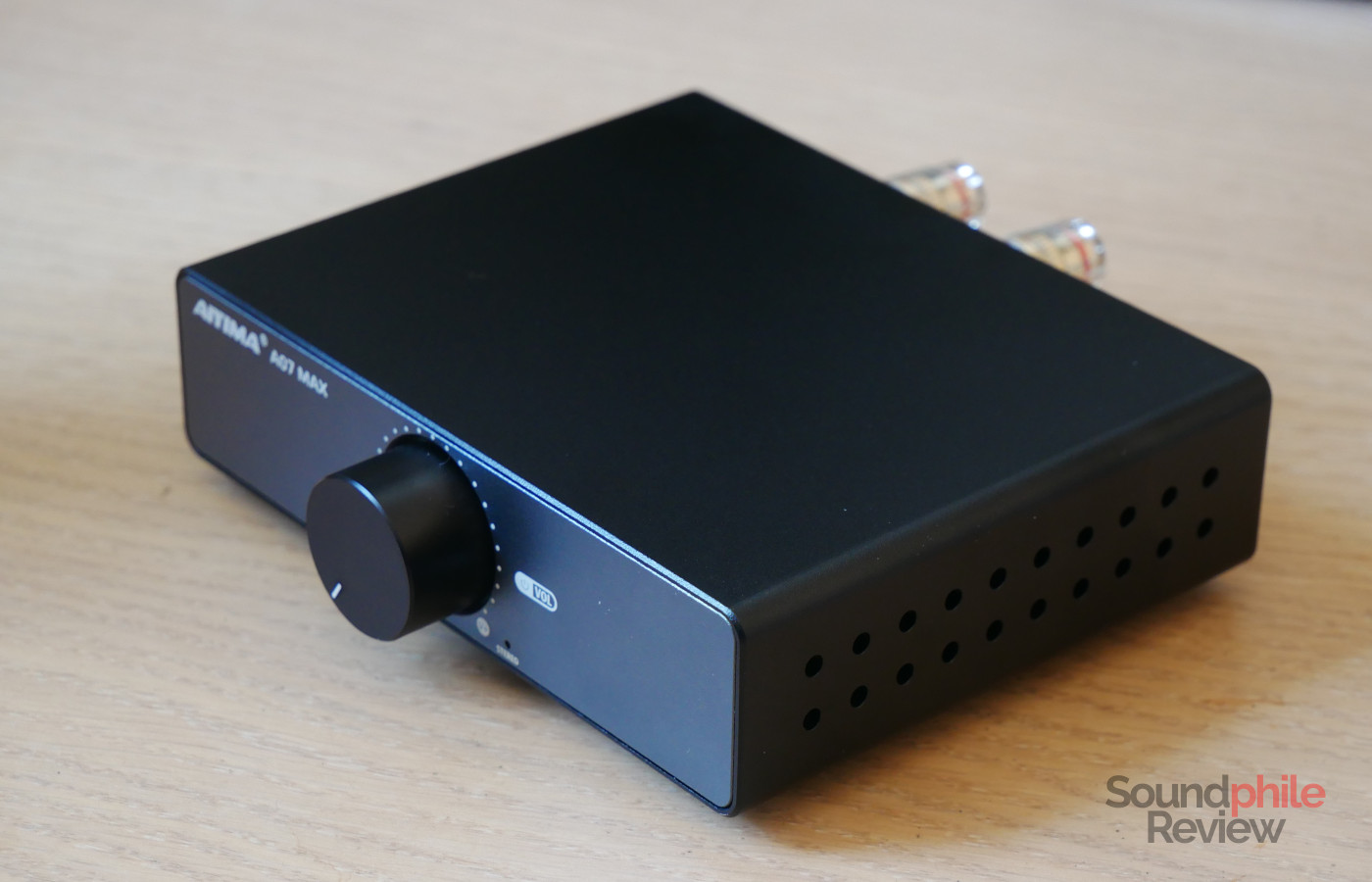
The A07 MAX is very well built and leaves little room for criticism in terms of its assembly quality.
The volume knob has a bit of weight to it and is very precise in adjusting the volume; it has a relatively large silent zone, though, which extends until about the 9 o’clock position. Its resting position is around 7 o’clock. It also acts as the power switch, so you can turn the amplifier on and off simply by rotating the knob.
Features & Specs
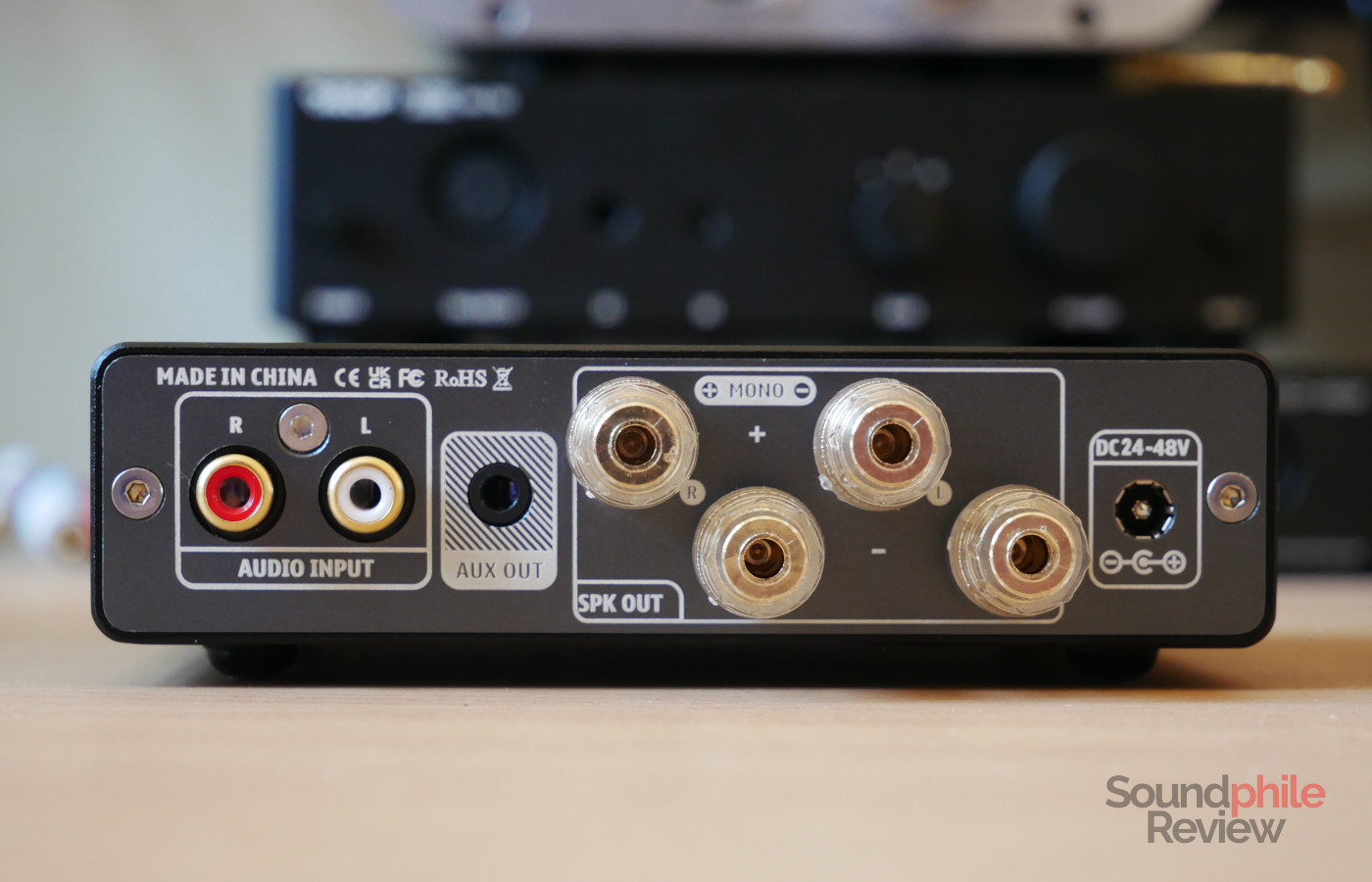
The AIYIMA A07 MAX offers input through the two RCA connectors and, on top of the usual speaker output, it also offers a 3.5 mm jack output: you can use it to employ the A07 MAX as a preamplifier for another amplifier, or to output to a subwoofer.
AIYIMA A07 MAX |
| Input | RCA |
| Suitable speaker impedance | 2 – 8 Ω |
| Maximum output power | 315 W per channel (declared) |
| Frequency response | 20 – 20,000 kHz (±1 dB) |
| THD+N (@1 kHz) | < 0.007% |
| SNR | > 110 dB |
| Crosstalk | N/A |
AIYIMA states that the A07 MAX can output up to 315 W per channel, but you would need a PSU capable of supply that much. In the product page they specify that you can only get to 315 W by using the amplifier in mono mode; even in that case, you need a very sizeable 48 V / 12.5 A PSU. The company does sell a 48 V PSU which is capable of 5 A of current output, which brings the total to a theoretical 240 W, or 120 W per channel (this is the PSU they sent me). That is still a very respectable figure, especially considering the price this unit is sold at. Just a short few years ago, getting such performance (with good quality…) at such a price would have been science fiction. The “base” model has a 32 V / 5 A PSU, which brings the total to 160 W (so 80 W p.c.).
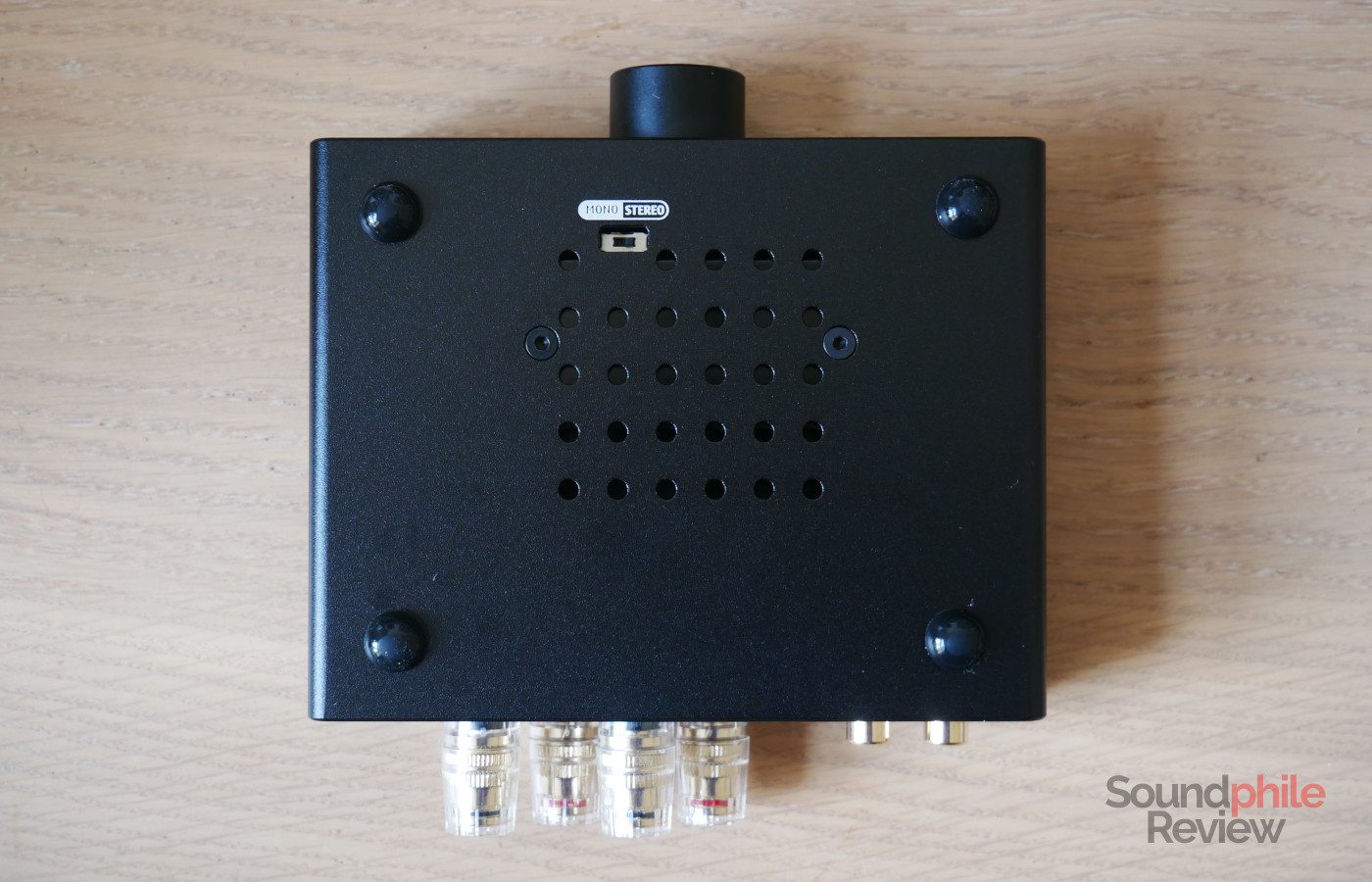
The 315 W figure above comes, just like it did with the Fosi Audio V3, from the maximum manageable power in the amp chip’s specs: the Texas Instruments TPA3255 is a very capable chip, but it does require the PSU to provide that much power. It is interesting that you can replace the op-amp chip with others: AIYIMA itself suggests the OPA2604AP, OPA2134, LME49720NA and LM4562 by TI, the MUSE01/02/03, or the AD827AQ by Analog.
Sound
I tested the AIYIMA A07 MAX by connecting it to an SMSL DO200 Pro and using a pair of ELAC DBR62 speakers.
The AIYIMA A07 MAX sounds completely clean and clear and is able to drive the DBR62 effortlessly, even at very high volume, with no audible distortion. The sound is neutral and “boring” – but in a very good sense, hence the quotes. The amplifier does not add nor take away anything from the sound, leaving it untouched and as it should be. This means that you will hear your speakers and not your amplifier, which is arguably what you want to do (ultimately you want to listen to the music rather than the speakers, but you get my point).
Transients are very fast and with very fast decay: I can appreciate the very fast drivers of the DBR62, as that they sound snappy. The level of detail is very high throughout the whole spectrum, also thanks to the instrument separation of the speakers being kept intact.
There is no background noise that I can hear, even when putting my ear right next to the drivers: the A07 MAX is able to offer a silent background.
Final Thoughts
The AIYIMA A07 MAX is a super-solid amplifier, and it becomes even more so once we factor in the price. The fact that it sits at the very entry level of the market should not fool you, as the A07 MAX delivers stunning performance with a neutral sound signature and lots of power on tap. It is so small it can fit anywhere and it has the nice addition of an aux output you can use to add a subwoofer to your setup. It is a lovely piece of kit that will appeal to beginners and experienced audiophiles alike. Recommended!

